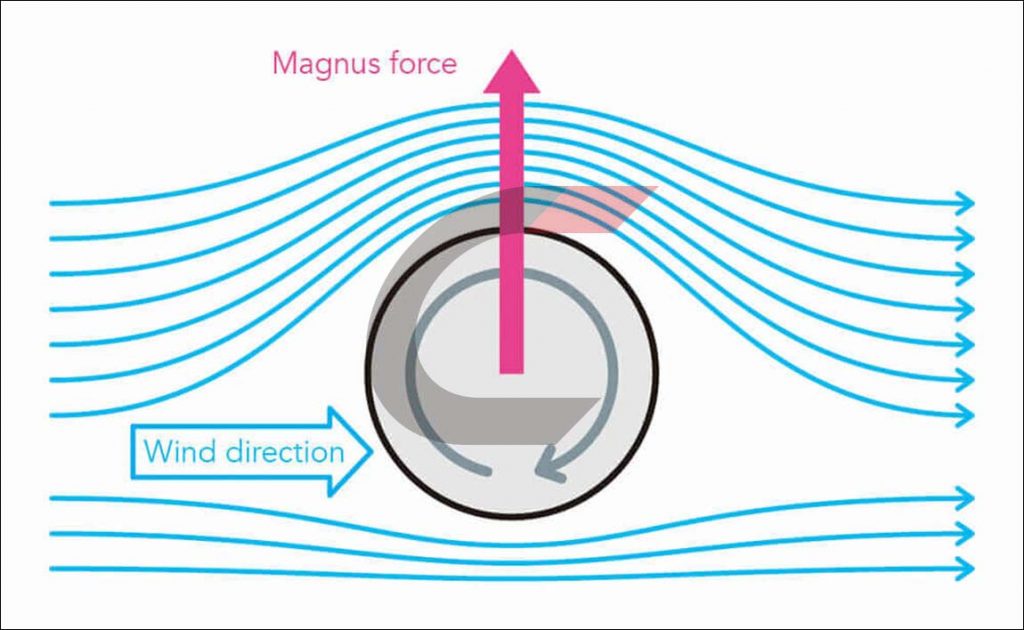Frequently Asked Questions
1) Question: What is “Magnus Force”?
 When a rotating cylinder or sphere is placed in a uniform flow (in the wind and water flow), the work force in a direction perpendicular to the flow is called “Magnus Effect”. This lifting force is a Magnus Force (below picture). This phenomenon has been investigated by German physicist, Heinrich Gustav Magnus in 1852. A curve ball in baseball or a slice in golf has the same phenomenon.
When a rotating cylinder or sphere is placed in a uniform flow (in the wind and water flow), the work force in a direction perpendicular to the flow is called “Magnus Effect”. This lifting force is a Magnus Force (below picture). This phenomenon has been investigated by German physicist, Heinrich Gustav Magnus in 1852. A curve ball in baseball or a slice in golf has the same phenomenon.
2) Question: How does it work?
Rotating Cylinder Wing instead of propeller can generate the Magnus Force and that force can rotate turbine. However, when only the Cylinder Wing is attached to turbine, the Magnus Force generated on the windward side and the Magnus Force generated on the leeward side cancel out and the whole turbine does not turn. Challenergy Inc., have succeeded in developing the unique technology which efficiently turns the wind turbine. (International patent pending)
3) Question: Why does the Magnus Vertical Axis Wind Turbine (VAWT) have a different shape from that of the typical propeller-type wind turbine?
The typical wind turbine which is a “horizontal-axis × propeller” type has difficulty in corresponding to the frequent change of wind direction and a potential risk to go beyond control in strong wind condition. Though the typical wind turbine can maintain high efficiency generation in stable wind speed and direction, it is hard to continue generation in sudden change of wind speed and direction. Moreover, the typical wind turbine in the region where typhoon or hurricane often hits like Japan potentially break down. On the other hand, “Vertical axis × Magnus force” type wind turbine which we have developed can correspond to entire wind directions due to vertical axis form and also control power generation in accordance with the wind speed by Magnus force in the rotation control of the Cylinder Wing. It is also expected to improve on cost effectiveness of wind turbine
4) Question: What is the MAGNUS VAWT’s withstanding and cutout wind speed?
Withstanding wind speed of up to 90m/s and cutout wind speed of up to 40m/s
5) Question: Does “typhoon power generation” mean that it only generates electricity during typhoon?
We developed the Magnus VAWT to stably generate electricity both under normal and severe wind conditions
6) Question: When do you expect to commercialize the Magnus VAWT?
We are aiming to commercialize 10kW capacity of the Magnus VAWT by 2020. For latest news and updates regarding our product development please check this website and challenergy.com
7) Question: How much capacity of the Magnus VAWT do you intend to achieve?
We will never stop upsizing the capacity. We are aiming to achieve MW class turbine in the future.
8) For the 10Kw model, how high is the actual size and required land area for one unit?
The 10kw model is around 20meters high, and should be installed within 100sqm. Area
For other questions not found here, please reach us through info@challenergy.ph
